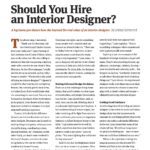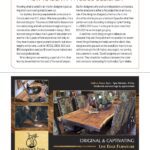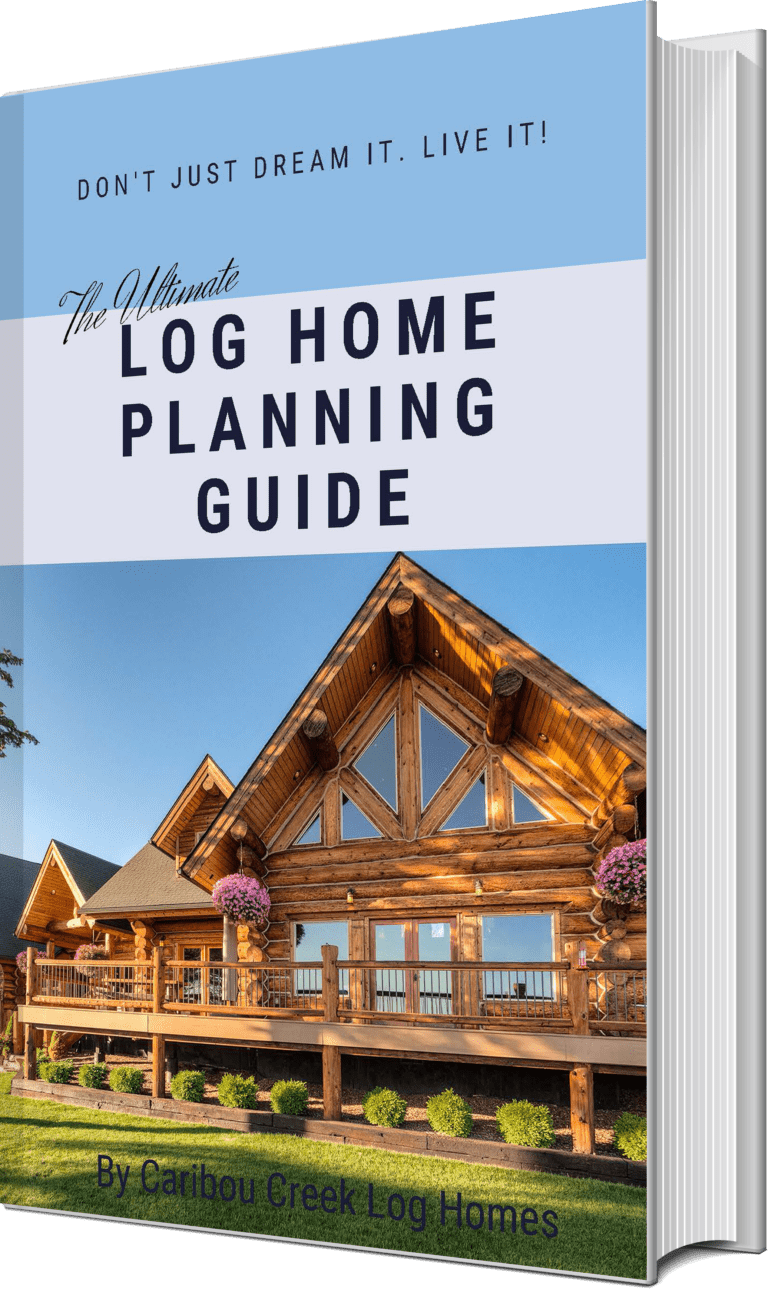
I answered the phone, “Thank you for choosing Caribou Creek Log & Timber Homes. How may I help you?” Lynn Fleming of Xact Interiors out of Coeur D’Alene, Idaho was on the other line. She called to inform me that she was placing an order with a lighting vendor for our client in Troy Montana. As the office manager, I would need to set up an account. After setting up the account I began to ponder “What really is the point of hiring an Interior Designer?” I figured it couldn’t be that hard to pick out lighting fixtures. My curiosity got the best of me, so I asked Lynn if she would let me interview her about what she was doing for our client. Not only was I amazed at the depth of her involvement in the project, but also at how truly important an interior designer is for a log home construction.
To start, let’s clarify the difference between an interior decorator and an interior designer. Decorators are focused on making things look pretty. Where pictures should be hung, or what color scheme to use in the house, paint colors, etc. Designers on the other hand are much more involved in the design of a home and as I mentioned, when it comes to log homes this becomes even more important and specialized than traditionally framed homes.
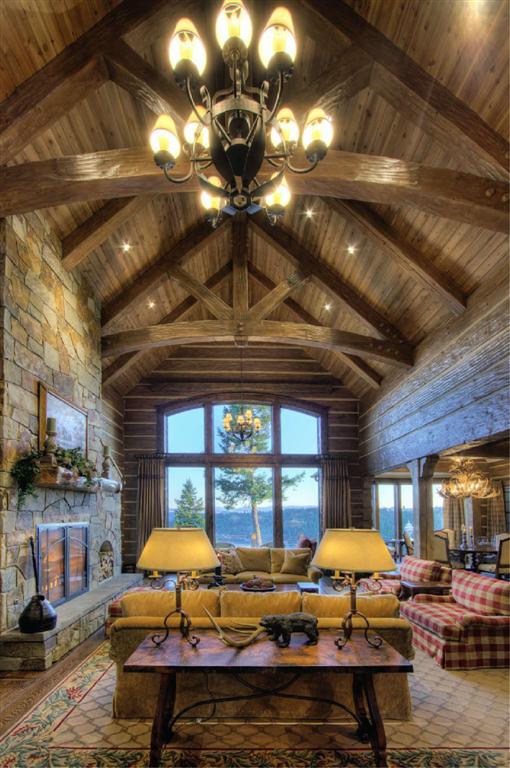
Lynn points out that very few interior designers understand log homes. Simple things like planning placement for entertainment systems or Christmas tree lights can be something many homeowners don’t think about initially and can become a problem later. “There are no hidey-holes in a log home, so planning for power cords from the beginning is very important.” Lynn stated.
It turns out, many homeowners have the same thought I did, that choosing interior fixtures couldn’t be very hard and as a result they choose to take on the task later to find that it is overwhelming and very time consuming which quickly turns the enthusiasm of decorating into an ominous exhausting chore. A good designer will ask their clients questions to help get a feel for their style preferences. By doing this the designer can greatly reduce the choices for the client. Why look at thousands of different lighting options, when you could choose from hundreds or even less. Designers listen to their clients’ needs, and because of their experience in the industry they know where to find the best solutions quickly narrowing down the options, yet keeping them relevant to the homeowners preferences.
Another difficult design element in log homes versus non-log homes is illumination. Log houses tend to be darker naturally due to wall thickness with deeper set windows that reduce daylight. A full understanding of lumen output; the color rendering of the light from warm to cool, and light placement is an important element designers bring to the table. Lynn expressed that, “Log homes need to be well lit which sometimes involves some hidden lights that create a nice glow. You want lighting that celebrates the log structure!”

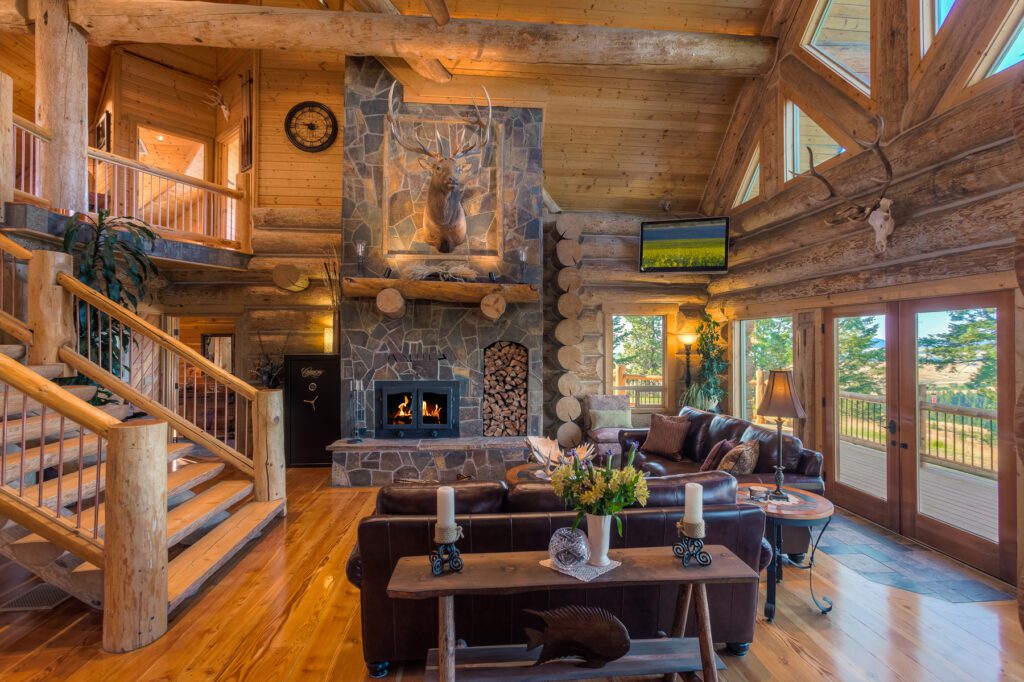
Often homeowners or inexperienced designers choose fixtures that are too small and clash against stately logs. “Fixtures need muscular flex. They need to hold their own against bold rugged logs.” Lynn confirmed. Paying attention to how fixtures flow with the log structure is something a designer of log homes would understand.
Another huge benefit to hiring an interior designer is that often they know of design elements and options that the homeowner is unaware of, bringing fresh ideas and new perspectives to the home can make quite a difference in the end. Lynn said many of her clients tell her, “It’s still our house Lynn, we picked everything out, but it is more than we could have delivered on our own.” Often a designer can wrap the design around the client, who they are and how they live often better than they themselves can imagine.
Lynn shared that it is best to have the interior designer be a part of the team early on during the creation of the plan set. She said that the designer shouldn’t need to spend much time on the project yet, but having the designer take a look at the plans early on will help the house become more comfortable and be in alignment with the homeowners lifestyle later on because key choices can be made that can’t be added after construction begins like curbless shower floors, entertainment system locations and equipment or broom or linen closets which are often forgotten. Even Christmas tree locations with outlets nearby can be a consideration.
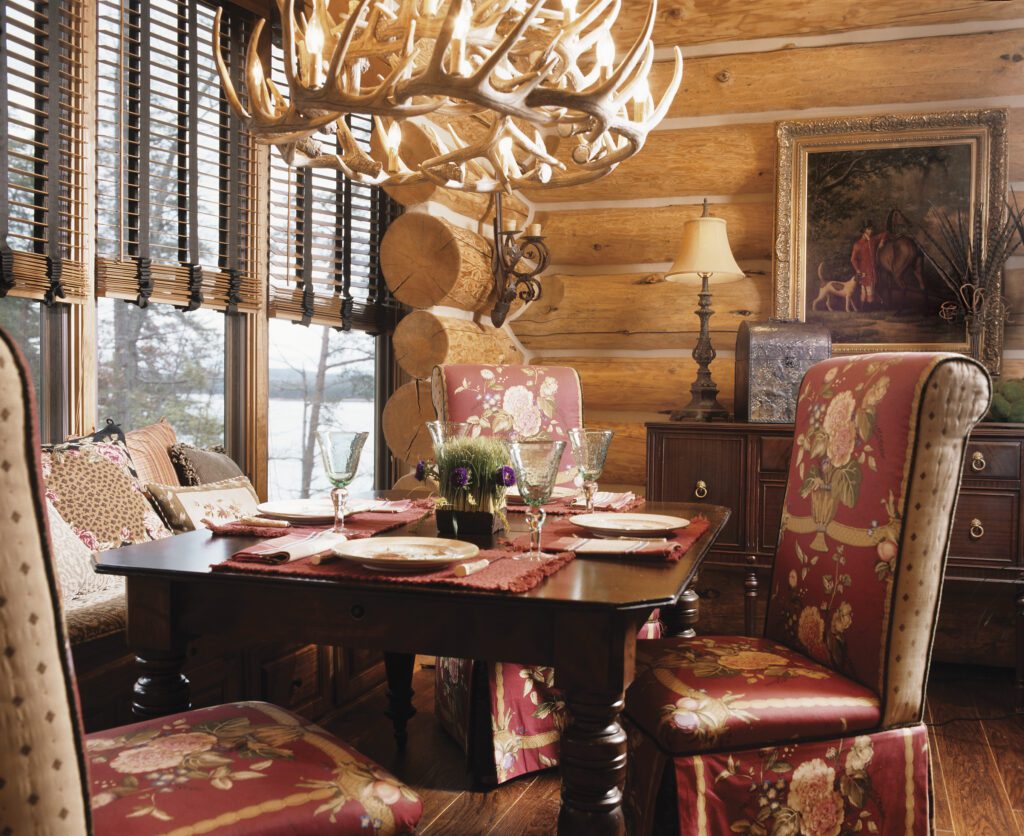
Understanding how the house is put together really helps the designer and ultimately the homeowner. Plumbing has to be done carefully, planning for lighting fixtures, making sure doors and windows come together nicely, suggesting sky lights at key places – All of these are examples of forethought that a designer brings to the table.
Some designers have a “signature look” and are hired to design a home in their style. This is especially true with high end designers; however, it is a bit difficult to do this in a log home. Log homes tend to dictate the design based on their construction. Marrying the log home’s element with the homeowners tastes and comforts is what an ideal log home interior designer will do.
Once the initial modifications are made, the designer should come back in after the structure is in place and really get busy helping the homeowner make decisions on interior aspects such as lighting and plumbing fixtures, appliances, countertops and cabinets, flooring, door knob choices, window covering options – the list goes on! As you can see there is so much. Lynn said, “Inevitably, homeowners hit a wall where they just get tired of picking things out.” A good designer is working with these resources daily and hones in quickly to products, solutions and budgets aligned to a client vision.
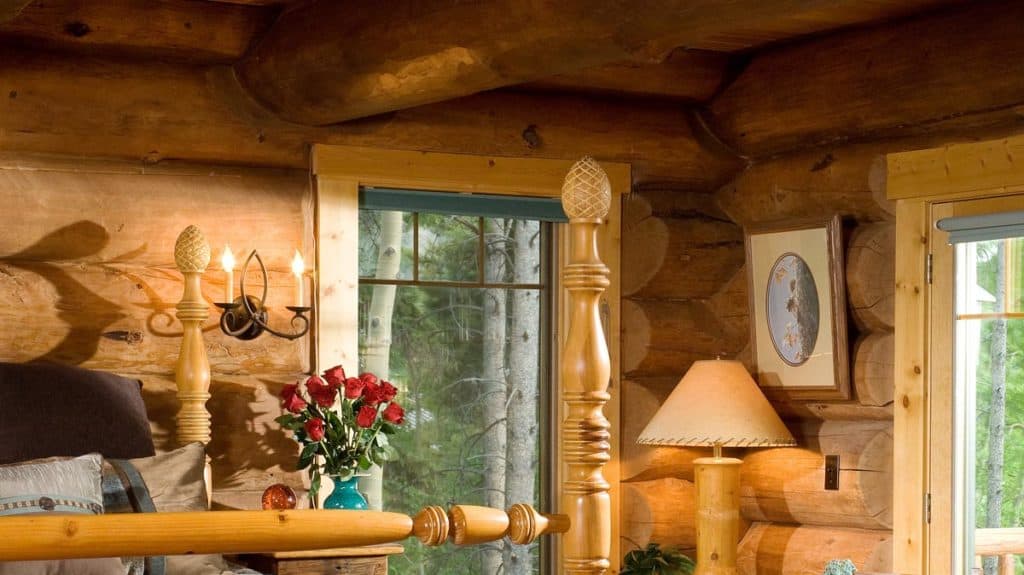
After Lynn’s extensive experience with interior design of log homes she has a few pro tips to share with us.
- Cabinets have to match the log home element. Putting Euro style cabinets in a log home is very difficult and really only works if the entire log home is done in a minimalist style. Cabinets should be stained rather than painted keeping the natural look; however, changing the color of stain is recommended to help change up the monochromatic look of browns and golds that log homes can easily get.
- Balancing textures is important. Log homes tend to have a lot of straight lines. Including stone work that changes the geometry is more aesthetically pleasing to the eye. This doesn’t just have to be on fireplaces, it can be incorporated into floor choices or wall coverings as well.
- Another tip she offered was drywalling or painting the ceiling white. She said this can really help reflect natural light and also shows off the beauty of the trusses.
- Grey log homes are trending, but need to be done carefully so as not to look like old worn out log structures.
- Walking the balance of browns and golds while trying to get eye pleasing pop without the house looking like a patchwork quilt can be tricky. The use of metals can be a great way to add pop while complimenting the wooden structure.
Design themes should flow through the house but not be the exact same. Keep the design thread going, but know when and where to change it so it keeps the house interesting so it doesn’t get stale or overused.
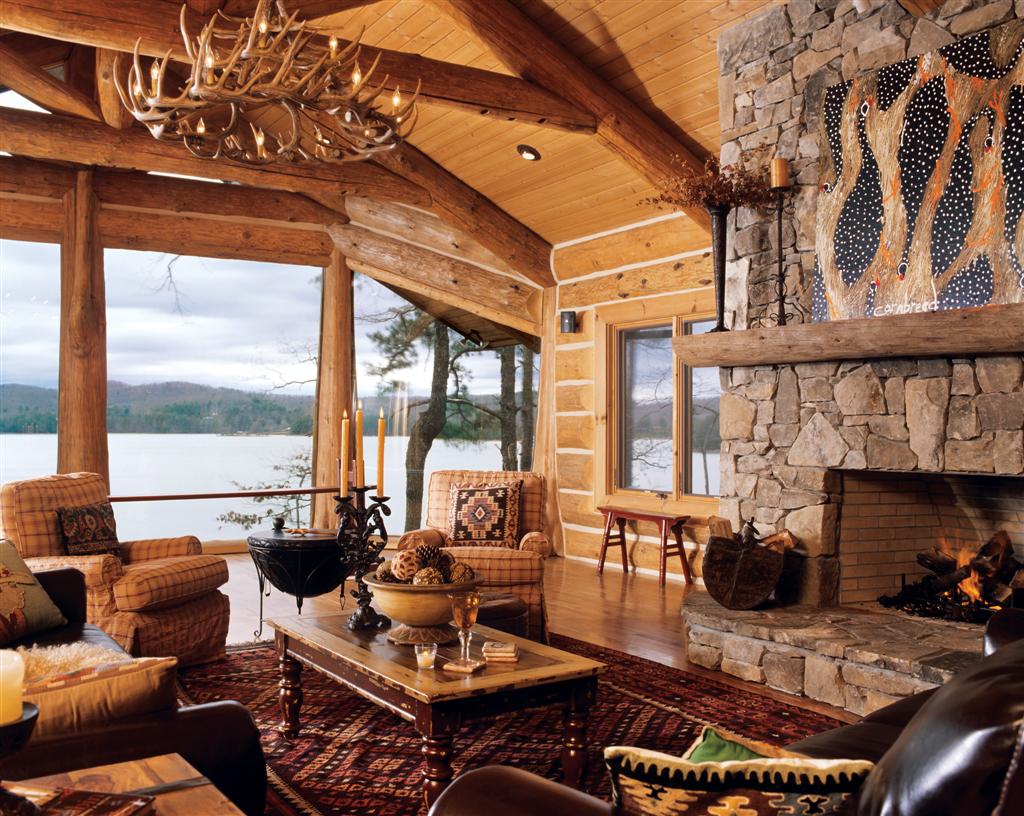
How to find a good designer...
Knowing what to look for in an interior designer is just as important as knowing what to look out for. Lynn shared insider information to how designers work that will help avoid costly mistakes.
For starters, licensing requirements are in place in Canada and most states across the US. Whenever possible opt for a designer with a license. This ensures that the designer knows more than decorating. He or she also will understand engineering and construction which is instrumental in design. Most licensed designers have 4 to 5 years of education and another 4 to 5 years of experience. They not only have to pass a rigorous practical exam, but also a lengthy written one. Look for NCIDQ, CIDQ, ASIS, IIDA and you know they are trained and licensed professionals with education and experience.
When designers are working as part of a firm their fee may be worked into the cost of the project overall. But for designers that work outside of a firm, as an independent contractor, the fee structure is either a flat project fee or an hourly rate. Usually, if the designer charges by the hour they should be able to give you a ballpark figure for what their portion will ultimately cost. Lynn said that in a $500,000 house if a designer is costing more than $10,000 they are just gouging.
Questions to ask your potential designer:
- How many house designs have you finished?
- Do you have referrals I can call?
- Have you done any log homes before?
- What is your fee structure?
- Are you licensed?
- Where did you get your education?
- Do you get kick-backs?
Here are a few things to look out for: Some designers get kickbacks on products they sell. This puts them in a position to want to sell things that may not really serve the client. Also, designers that get paid on the overall job may try to upsell items to get the bill higher, once again, not serving the customers needs. “A good designer should be honest and neutral. They should be a mediator between the client and contractor advocating for both sides when needed.” Lynn stated.
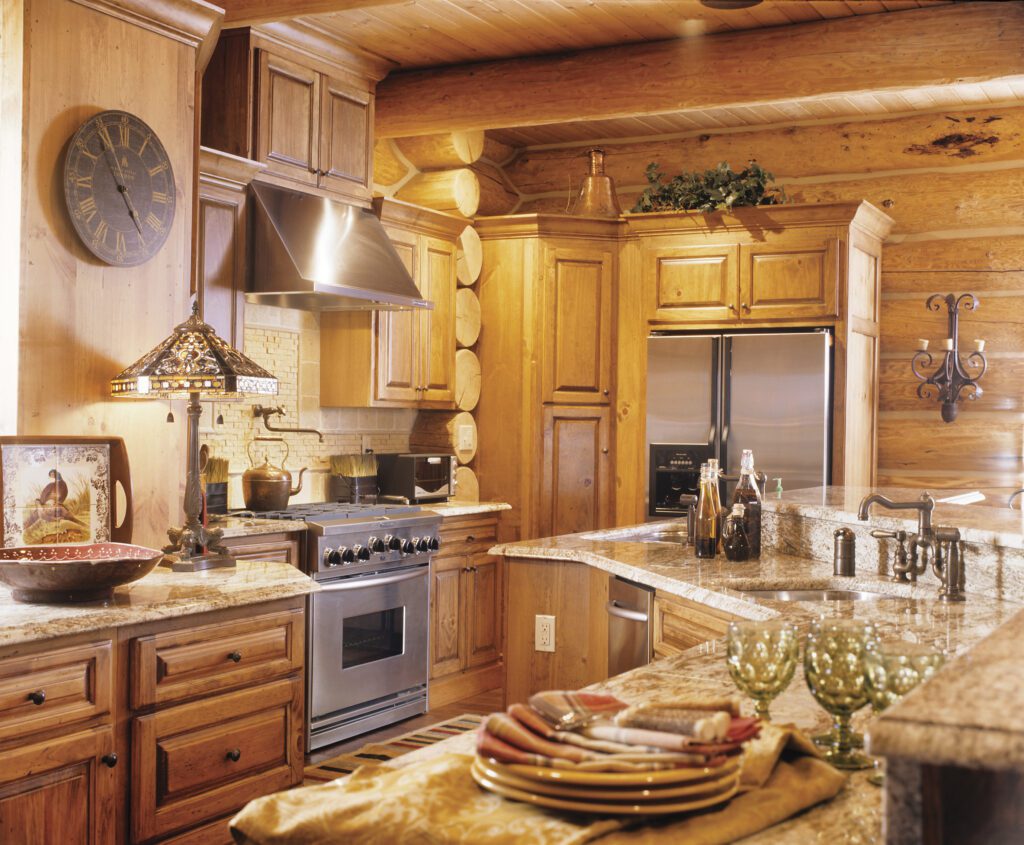
Lynn Fleming has been designing interiors for over 40 years. Her passion for architecture began as a young girl. Before becoming a designer she nurtured her love of travel and adventure by participating on a synchronized swim team. After completing architecture school she realized she was not interested in dealing with the red tape involved at that level so she followed her heart into design where she enjoys watching projects unfold. Lynn got her foundation for design working for commercial companies such as numerous Canadian hotel chains, Marie Callenders, and also Marriott destination spots. One of her many notable projects was the Essex house in New York. Later she moved to Hollywood and designed many homes for celebrities and artists. After becoming a mother she was called to relocate to beautiful North Idaho where she can work with clients around the world. She is well versed in log home designs from East Coast to West Coast and all the space in between.
This article was featured in the Log Home Annual Buyers Guide printed in August of 2020!
